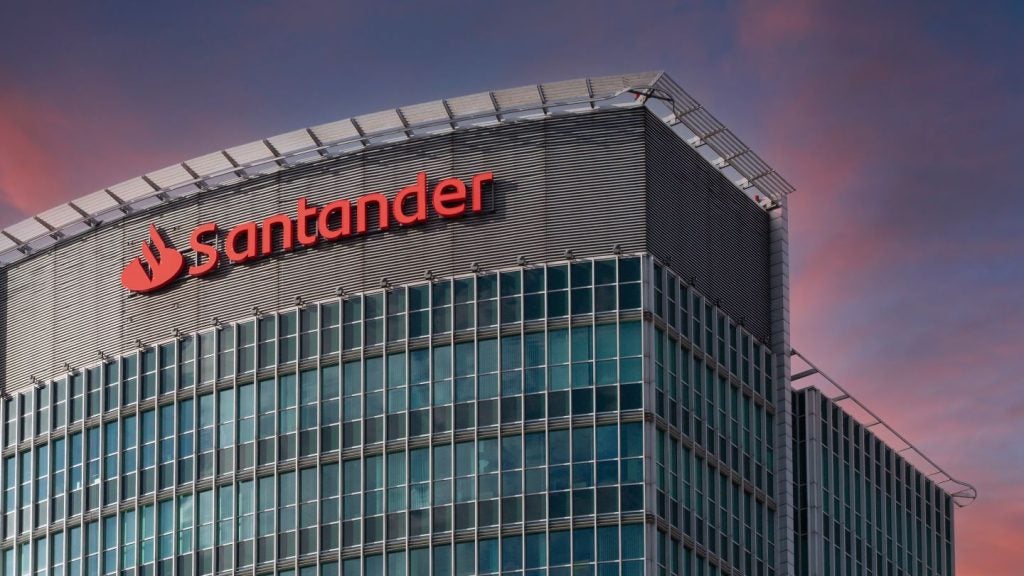
Does social media really matter in retail banking? The
Retail Banker Interactive webinar, Social Media and
Retail Banking Webinar: Passing Interest or Business Tool?,
held in association with Finacle from Infosys and featuring first
direct’s Natalie Cowen and Digital MR’s Michalis Michael, set out
to find the answers.
Chaired by Retail Banker International editor Douglas
Blakey, the speakers for the online Social Media and Retail Banking
Webinar were Sanat Rao, vice-president and global head, business
development, client engagements and alliances for Finacle, Infosys;
Natalie Cowen, head of brand and communications at first direct;
and Michalis Michael, managing director at Digital MR.
Blakey opened the session by
asking, at the very outset, why is there a need at all to talk
about social media? Blakey pointed out “some fascinating examples
of very innovative initiatives” on social media citing American
Express, Chase, NAB, BNP Paribas and Akbank as examples.

US Tariffs are shifting - will you react or anticipate?
Don’t let policy changes catch you off guard. Stay proactive with real-time data and expert analysis.
By GlobalDataBlakey also mentioned that the fast
growth that social media has seen in the last few years makes it
unavoidable, as it took Facebook just nine months to reach 50m
users, compared with 4 years for the internet and 13 years for
TV.
He added: “A question for later
might well be, can banks afford not to be engaged in social
media?”
Each presenter at the webinar put
forth a unique perspective about why we need to be talking about
social media in retail banking.
Changing the way we do
business
 Rao opened the webinar with a presentation on how social
Rao opened the webinar with a presentation on how social
media is changing the way we do our business.
Rao said: “Customers have a choice
today and they are largely influenced by the experiences of
others.”
Rao added that the power of the
voices of banks, advisers, and intermediaries, who are the original
influencers of customers, has in some ways got diluted in favour of
communities and advocates.
The shift in customer interaction
due to social media has brought about – the “kind of communication
where each customer wants to be seen in his or her own way” – is
also something to be kept in mind, said Rao.
Rao highlighted social media as a
catalyst for banking innovation, service innovation, product
innovation and process innovation.
“Today, more and more consumers are
becoming what is popularly being coined as ‘prosumers’ – proactive
consumers – who are enabling the design and development of the
product itself,” said Rao.
Through the presentation, Rao spoke
about the impact of being social and how it generates leads,
improves client service, deepens relationships and gives banks a
chance to differentiate itself from the competition.
As customers spend a lot of time
online nowadays, especially on social media forums, their whole
expectation about how another organisation interacts with them has
“fundamentally changed” said Rao.
He added: “The digital consumer is
a lot more impatient today than he was three years ago.”
Rao touched upon how banks should
reactively listen and monitor online conversations across social
media platforms or proactively reach out to customers, and
encourage them to share feedback, knowing full well that not all of
the feedback will be positive.
The fact that customers are capable
of migrating to another bank easily has made lenders more aware
that the only way they can retain the customer’s trust is to
“ensure that the relationships are deepened substantially”, said
Rao.
 According to Rao, banks are finding “they have an
According to Rao, banks are finding “they have an
unexpected ally in the social web to win back customers’
trust”.
“One lesson to be learnt is nothing
is more important than meeting customer expectations,” added Rao,
pointing out that banks – through social media – can gauge what
customer needs are today, and what their needs will be
tomorrow.
Rao ended his presentation by
saying social media is “permanently and profoundly changing the way
we communicate” and banks don’t have a choice but to leverage
it.
The next speaker, Natalie Cowen,
focused her presentation on first direct’s social media
strategy.
“For us, it came back to our own
mission as an organisation, and that is about pioneering amazing
service, no matter what the channel,” said Cowen.
Cowen shared statistics as to how
many followers first direct has on Facebook, Twitter and YouTube
and how those numbers encouraged the lender to get involved more
and develop its own social media platforms.
Personalised
channels
 Moving
Moving
on to first direct’s personalised social media channels – Little
Black Book, Talk, and Lab – Cowen shared the number of members
these platforms already have and how first direct is using the
platforms.
Explaining how all three
personalised social media platforms from first direct work, Cowen
shared several examples of contests and initiatives that have been
organised over these channels and how first direct has been able to
come up with new products through suggestions over social media
channels.
Said Cowen: “For us it has been
about learning as we go along and taking the natural next
step.”
And the key steps in social media
success, according to Cowen, are to start by listening and then go
on to learning, adapting, and responding.
First direct’s plan is to make its
Twitter channel more customer-service oriented “than the plain PR
stream that it is at the moment” said Cowen.
Calling social media “the new word
of mouth”, Cowen said first direct’s objectives were to enable
employees to have great conversations with customers in these
spaces. She flagged up scope to create, share and engage via
storytelling, and recruit new customers through customer
satisfaction, brand awareness, consideration, and
recommendation.
To close her presentation, Cowen
said that some lessons first direct has learnt through social media
are to “do your homework, be prepared, and take action”.
Cowen stressed the need to “take
action” and “really show that you are responding to what people
say, and you are not just there because social media is there and
you want to be part of it”.
“The ultimate end goal for us is to
empower customers to share their experiences and hopefully
prospective customers will hear those stories and join us as well,”
said Cowen.
She ended her presentation saying
she hopes first direct customers “continue to act as brand
ambassadors” on the lender’s behalf.
‘Crawl before you can
fly’
The last speaker for the webinar,
Michalis Michael, spoke about how banks should learn to “crawl”
before they “fly” and listen to what the customers are doing, what
conversations they are engaging in, and take a low-risk approach
before embarking on a social media journey.
Michael mentioned that if ‘Web
Listening’ is not yet an integral part of a bank’s marketing,
operations, and product development function, they must take to it
and explore, define targets, design proof of concept, execute,
pilot and debrief.
Michael said that “one of the
realisations that marketing directors are coming to these days is
that social media is a mass medium and even though it is one to
one, peer to peer, member to member, it can be as massive as a TV
commercial”.
He also said: “What we are trying
to achieve is advocacy.”
Michael highlighted that social
media is classified as earned media, as opposed to bought media
such as TV commercials.
“Earned media is when you earn
followers on Twitter and ‘Likes’ on Facebook,” explained
Michael.
Four notions, according to Michael,
that can help banks target and accelerate advocacy are content
syndication, automated content dissemination, the influence of
people who post comments online, and the travel of ideas.
Michael pointed out that one needs
to know who the influential people are and a universal metric is
needed, that does not exist today.
“One may say number of followers on
Twitter can be a metric, but how do you transfer that across
millions of websites? The travel of ideas is about how far does an
idea from my blog travel?” Michael asked.
Before making a full-fledged entry
into social media, Michael suggested banks create “a very small
community of members and influencers, ideally who would help your
company to start engaging in the other social media”.
For those who are struggling to
persuade senior executives to have a social media presence for
their companies, Michael suggested that “if the growth card doesn’t
work, you can also use the fear card”.
“What would happen if they don’t
engage? And that is a question that is often ignored,” he said.
Michael also highlighted the
business benefits of active web listening and gave a six-level
drill down of capabilities online.
He depicted through a graph the
phases that a company can go through over social media, starting
with ‘where are you on the curve’ to ‘where do you want to
go?’.
At the end of his presentation,
Michael said: “I believe the Holy Grail is social CMR and social
business process management.”
Questions from listeners were taken
at the end of the webinar and three participant polls were run
through the entire session.
The Finacle and RBI
Social Media and Retail Banking Webinar put forward some
diverse views about the relevance of social media for banks
today.
It gave a welcome overview of the tapped as well as untapped
potential that lies ahead of lenders and their engagement with
social media.







